FAS |
Military |
DOD 101 |
Systems |
Aircraft |
ROW ||||
Index |
Search |
Join FAS




JH-7 [Jianhong Fighter-Bomber] [B-7]
Xian Aircraft Industry Company [XAIC], based in Shaanxi Province, produced the new JH-7 Jianhong-7 [Jian=fighter hong=bomber] Flying Panther supersonic fighter- bombers for the Chinese Navy at the modest rate of two aircraft per month. Due to its unreliable engines, the JH-7 was rejected by the PLAAF in favor of Su-27SK. It was first revealed publicly September 1988 as model at Farnborough International air show, with the first of two prototypes having been rolled out during previous month. The first flight came in late 1988 or early 1989. Service entry was originally scheduled for 1992-93, but introduction in significant numbers seems to have been delayed. Having nonetheless entered the Chinese Navy's air arm inventory in the early 1990s, according to some reports as few as a dozen [and probably no more than two dozen] pre-production JH-7s are in service with PLA Naval Aviation, with additional JH-7 production awaiting the availability of a Chinese engine.This twin-engined, two-seat, swept-back high mounted wing supersonic fighter-bomber has a configuration similar to the British "Tornado" attack plane. The plane is designed to have the same role and configuration class as the Russian Sukhoi Su-24 'Fencer'. It has high mounted wings with compound sweepback, dog tooth leading edges adn marked anhedral; twin turbofans, with lateral air intakes; all swep tail surface, comprising large main fin, single small ventral fin and low set all moving tailplane; small overwing fence at approximately two third span. Quarterchord sweep angles approxomately 45 degrees on wings and fins, 55 degrees on tailplane. Armament including twin-barrel 23mm gun in nose; two stores pylons under each wing, plus rail for close-range air-to-air missile at each wingtip. Typical underwing load for maritime attck includes two C-801 sea-skimming anti-ship missiles and two drop tanks.
The JH-7 has provided the Chinese Navy with improved attack capabilities. However, he WS9 turbofan does not have enough thrust (with boosted thrust at 9,305 kg per engine), the maximum bomb-carrying capacity of this large fighter with a maximum takeoff weight of 27 metric tons is only five metric tons, far less than that of foreign aircraft in the same weight class.
The XAIC plan is to use Russian-made engines and advanced composite materials to improve the B7 and equip it with terrain-tracking radar and electronic countermeasures equipment. This improved JH-7A will have more reliable AL-31F engine as well as a domestic radar with a detection range of 100 km and the ability to simultaneously track 14 targets and attack 4 to 6. This improved JH-7A is a candidate to replace the outmoded B5 and A5 attack planes. However, the J-10 fighter-bomber has a maximum bomb-carrying capacity of design at 6.8 metric tons, and the Su-27 also has a bomb-carrying capacity of nearly 6.5 metric tons.
While it was widely reported that the aircraft would have upgraded Russian AL-31SM turbofan engines, the JH-7 that was shown at the 1998 Zhuhai Aerospace Show had two British Spey MK-202 turbofan engines. Turbofan engines are a bottleneck technology for the Chinese aircraft industry which, from the 1960's to the present has always used less efficient turbojet engines.
Specifications | |
| Builder | Xian Aircraft Industry Company [XAIC] |
| Wing span | 12.80 m (42 ft 0 in) |
| Length (excl probe) | 21.00 m (68 ft 10.75 in) |
| Height | 6.22 m (20 ft 4.875 in). |
| Max take off weight | 27415 kg (60,439 lbs). |
| Powerplant | Two Xian WS9 turbofans (licence Rolls-Royce Spey Mk 202) each 91.2 kN; 20,515 lbst with afterburning |
| Speed |
Max level speed at 11000 m (36,080 ft): Mach 1.6-1.7 (917-975 kt; 1.699-1.808 km/h; 1.056-1.122 mph); Cruise speed: Mach 0.80-0.85 (459-487 kts; 850-903 km/h; 528-561 mph); |
| Service ceiling | 15500 m (50,850 ft) |
| Combat radius | 485 n miles (900 km; 560 miles). |
| Max weapon load | 5000 kg (11,023 lbs) |
| Armament |
Twin barrel 23 mm gun in nose; two store pylons under each wing plus wingtip rails for PL-5 air-to-air missiles Typical maritime attack weapons load would be two C-801 or C-802 (YJ-1) sea-skimming anti-ship missile and two drop tanks. |
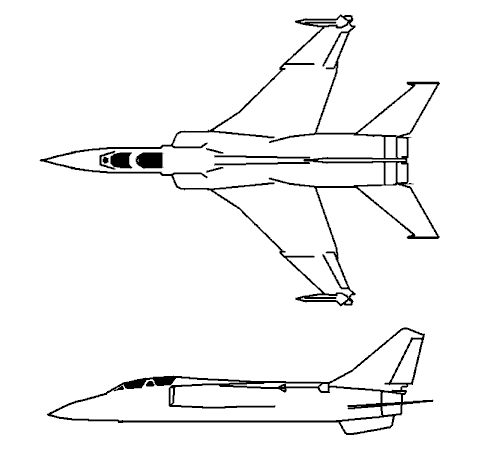
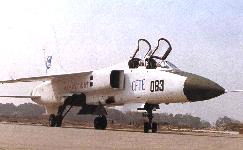
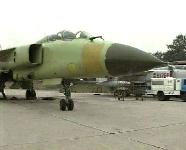
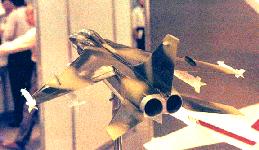

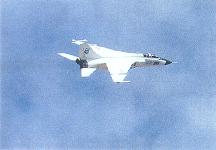





Sources and Resources
- "China's New-Generation Main Military Aircraft" by Hsiao Yu-sheng - Hong Kong KUANG CHIAO CHING, 16 Nov 95 No278, pp 70-72 [PRC: Article Views Military Aircraft Development : FBIS-CHI-96-021 : 16 Nov 1995] JH-7 / FBC-1 Photo Archive
- HONG-7 All weather bomber (FBC-1 export version)
FAS |
Military |
DOD 101 |
Systems |
Aircraft |
ROW ||||
Index |
Search |
Join FAS
http://www.fas.org/man/dod-101/sys/ac/row/jh-7.htm
Maintained by Robert Sherman
Originally created by John Pike
Updated Monday, August 09, 1999 2:27:13 PM